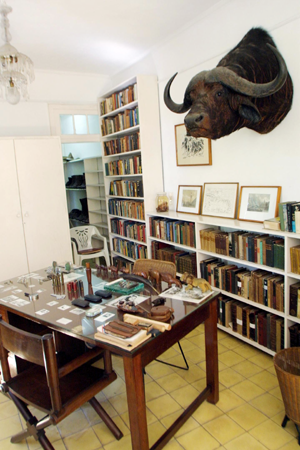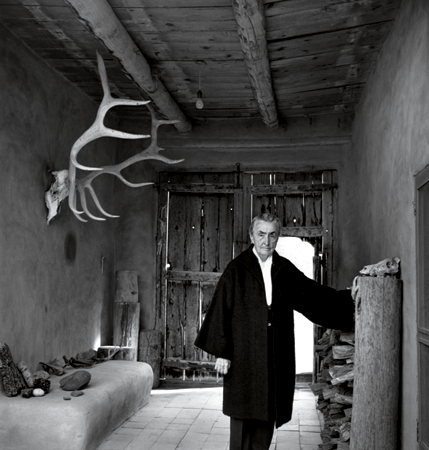
Inside the Creative Space
Where some great artists and writers communed with the muse

Alexander Calder in his rural Roxbury, Conn., studio. The sculptor moved there in 1933 and converted the ice house behind his home into a workshop, which allowed in breezes that kept his signature mobiles twirling.
“An artist’s studio should be a small space because small rooms discipline the mind and large ones distract it,” Leonardo da Vinci once said. It’s hard to argue with the supreme Renaissance genius; still, contemporary British artist David Hockney might beg to differ: vibrant and productive at 81, he works out of an airy converted paddle-tennis court. The dichotomy shouldn’t be surprising. Historically, creative spaces have varied according to their occupants’ unique personalities—and idiosyncrasies. Think of your own ideal work environment. Where do you feel free to let your imagination run wild—yet also focus on the task at hand, whether it’s painting, writing, solving math theorems or making out the monthly bills? You may thrive in a spare, tidy setting—or else (like this writer) amid piles of books, papers and empty coffee cups. Some of us demand solitude, shielded from humanity’s hubbub, somewhere in nature, perhaps. Some find stillness insufferable, can’t bear the chirps of crickets or birds, and produce best amid the urban din. J.K. Rowling famously wrote her early Harry Potter novels at Elephant House and Nicholson’s, two Edinburgh cafés.
The following pages offer a glimpse into some world-class creative spaces, each one as distinctive as the creators themselves.

A buffalo hunting trophy hangs over the Havana desk where Ernest Hemingway produced The Old Man and the Sea

Movie studio artists John Goodson and Bruce Holcomb at Industrial Light & Magic in San Francisco

Victor Hugo wrote The Hunchback of Notre Dame at this standing table in the Channel Islands, where he lived in exile after opposing Napoleon III

Designer Christian Siriano (with mood board) at work in NYC’s Garment District

English painter, photographer and printmaker David Hockney in his Hollywood Hills studio

Andy Warhol in 1965, at his Silver Factory in midtown Manhattan, where he produced paintings, prints and parties

Georgia O’Keeffe in 1945 moved into an abandoned Spanish Colonial–era compound in Abiquiú, N.M.

Abstract Expressionist Jackson Pollock in 1949, at work in his unheated, windowless converted barn on Long Island

Visionary architect Frank Lloyd Wright (in 1956) at Taliesin, his home in Wisconsin that he rebuilt three times